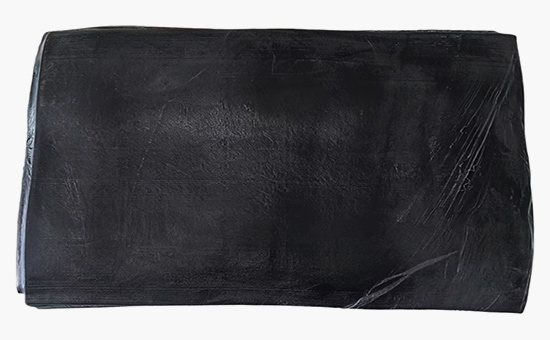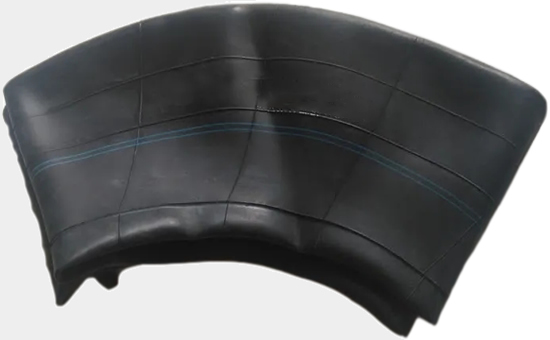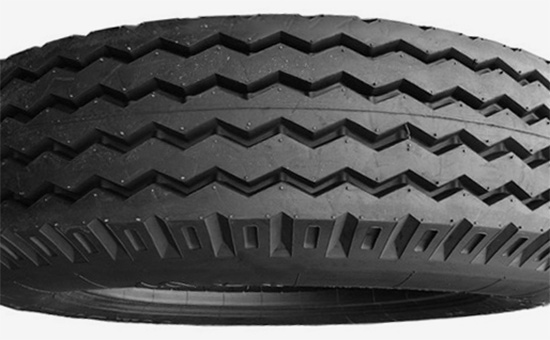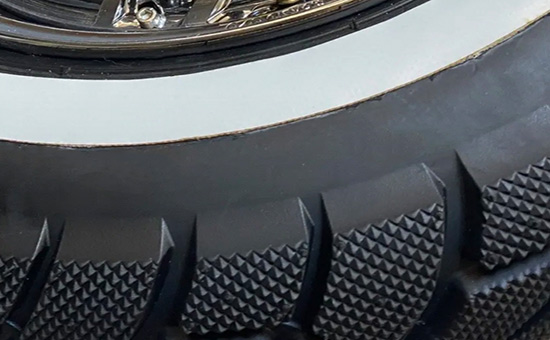
Butyl reclaimed rubber is made from old butyl inner tubes as raw materials, processed through multiple steps including crushing, desulfurization, filtration, and refining. It has good air tightness, heat resistance, and chemical stability. It can be used alone or mixed with butyl virgin rubber, ethylene-propylene rubber, natural rubber, and other materials to prepare rubber compounds for different parts of automobile tires, effectively reducing raw material costs and improving the overall performance of the rubber while ensuring the quality of the finished product.
1. The application of butyl reclaimed rubber in inner tubes of automotive tires
The inner tube of a tire is an elastic ring-shaped tube with a tire valve, mainly used to maintain the internal pressure of the tire. It must have good air tightness, elasticity, heat resistance, aging resistance, and low permanent deformation, and is generally made from primarily butyl rubber. Reclaimed butyl rubber retains the basic performance characteristics of butyl rubber, possesses good air tightness, and can be used together with butyl rubber and EPDM rubber to produce automotive inner tubes, effectively preventing gas leakage and ensuring stable air pressure within the tire.

(1) Production of tire inner tube vulcanization formula using butyl rubber/butyl reclaimed rubber.
70 parts of butyl rubber, 30 parts of butyl reclaimed rubber, 3.5 parts of zinc oxide, 1 part of stearic acid, 20 parts of carbon black N550, 18 parts of carbon black N774, 2 parts of oil, 0.35 parts of accelerator DM, 0.7 parts of accelerator TMTD, 1.25 parts of sulfur; total: 146.8 parts.
(2) Completely use butyl reclaimed rubber to produce the vulcanization formulation for automobile tire inner tubes.
100 parts of butyl reclaimed rubber, 5 parts of zinc oxide, 2.5 parts of stearic acid, 50 parts of carbon black N550, 0.5 parts of accelerator M, 1 part of accelerator TMTD, 2 parts of sulfur; totaling 161 parts.

(3) Production of automotive tire inner tube vulcanization formula using butyl rubber / EPDM rubber / butyl reclaimed rubber.
60 parts of butyl rubber, 10 parts of ethylene propylene diene monomer rubber, 30 parts of butyl reclaimed rubber, 3 parts of zinc oxide, 1 part of surfactant, 1 part of aging inhibitor AM, 22 parts of carbon black N550, 22 parts of carbon black N774, 9 parts of naphthenic oil, 0.35 parts of accelerator M, 0.7 parts of accelerator TMTD, 1.45 parts of sulfur; total 160.5 parts.
2. The application of butyl reclaimed rubber in tubeless tire air-tight layers.

Tubeless tires rely on the tight fit among the tire bead and the rim to maintain airtightness. The airtight layer is a key functional layer within the tire, directly in contact with the compressed gas. This layer requires the rubber material to have good airtightness, heat resistance, elasticity, aging resistance, and certain abrasion resistance, generally made from butyl rubber, chlorinated butyl rubber, and other main materials. The proper use of butyl reclaimed rubber can effectively reduce raw material costs.
Chlorinated butyl rubber 55 parts, butyl reclaimed rubber 45 parts, zinc oxide 4 parts, magnesium oxide 1 part, stearic acid 1 part, age resistance agent D 1 part, carbon black N660 35 parts, naphthenic oil 12 parts, accelerator DM 0.8 parts, accelerator TMTD 0.2 parts, sulfur 1.6 parts; total 156.6 parts.
3. The application of butyl reclaimed rubber in the tread rubber of automobile tires.

The tread rubber of automobile tires is the outer layer of rubber that comes into direct contact with the road surface. The rubber material is required to have excellent wear resistance and fatigue performance, good aging resistance, high tensile strength, elasticity, toughness, and low rolling resistance. Generally, it is made from natural rubber, styrene-butadiene rubber, and polybutadiene rubber as the main raw materials. A small amount of butyl reclaimed rubber E4LYY1022 can be added to improve the fatigue resistance and heat aging resistance of the tire tread rubber, reduce hysteresis loss of the tread rubber, and decrease rolling resistance. Experiments have shown that after replacing 20% of the polybutadiene rubber with butyl reclaimed rubber, the tensile strength retention of the automobile tread rubber at high temperatures (100°C) increased by 15%.
Natural rubber 40 parts, styrene-butadiene rubber 45 parts, butyl reclaimed rubber 15 parts, zinc oxide 3.5 parts, stearic acid 2 parts, antioxidant RD 1 part, antioxidant 4010 1 part, paraffin 1 part, carbon black N220 36 parts, carbon black N330 10 parts, oil 7 parts, accelerator NOBS 1.1 parts, sulfur 1.2 parts; Total 162.8 parts.
4. The application of butyl reclaimed rubber in the black sidewall rubber of automobile tires.

The black sidewall rubber of car tires refers to the rubber layer on the outer fabric layer of the tire sidewall, mainly serving to protect the tire body. During the operation of the tire, the sidewall undergoes frequent flexural deformation, requiring the rubber material to have good flexibility and bending resistance, certain elasticity and aging resistance. It is usually processed from natural rubber, styrene-butadiene rubber, and cis-butadiene rubber; an appropriate mixture of butyl reclaimed rubber can enhance the sealing performance of the tire sidewall and improve the heat resistance, aging resistance, impact resistance, and chemical stability of the black sidewall rubber.
Natural rubber 45 parts, styrene-butadiene rubber 40 parts, butyl reclaimed rubber 15 parts, zinc oxide 3.6 parts, stearic acid 1.8 parts, aging inhibitor 4020 2.7 parts, microcrystalline wax 1 part, carbon black N375 50 parts, aromatic oil 3.6 parts, accelerator NOBS 0.55 parts, sulfur 1.15 parts; total: 164.4 parts.

Butyl reclaimed rubber, as a recycled rubber resource from waste butyl rubber products, can reduce raw material costs and improve the processing performance of the rubber compound and the performance of the finished product when used in the processing of various components of automobile tires. In the future, the editor will continue to share tips on the application of butyl reclaimed rubber in rubber products such as agricultural tires, industrial tires, engineering tires, motorcycle tires, and bicycle tires, as well as curing formulas.
Exclusive original article [commercial authorization] reprint, excerpt and excerpt in any form are prohibited without written authorization. Focus on Hongyun rubber: learn the process formula and raw material technology of producing rubber products from recycled rubber to help you reduce costs and increase profits